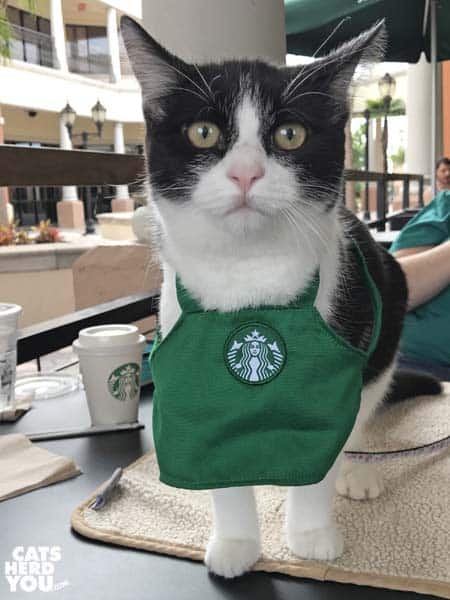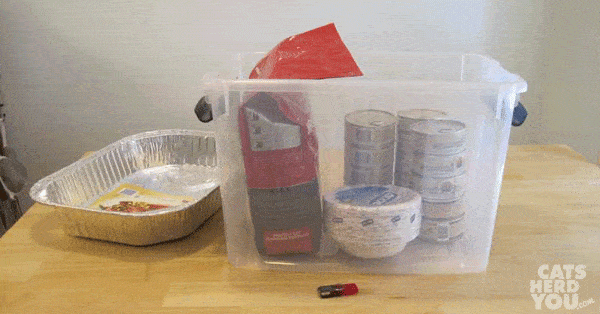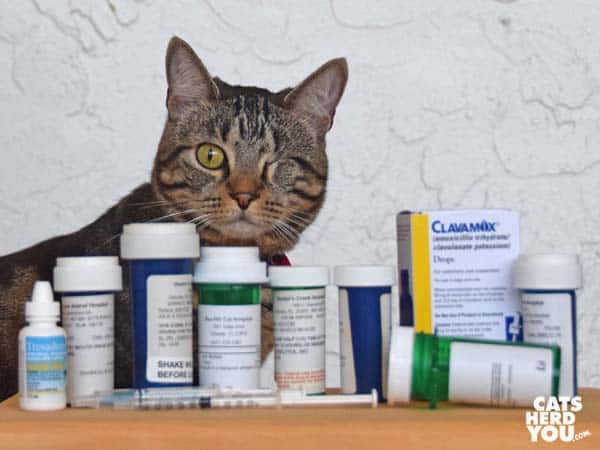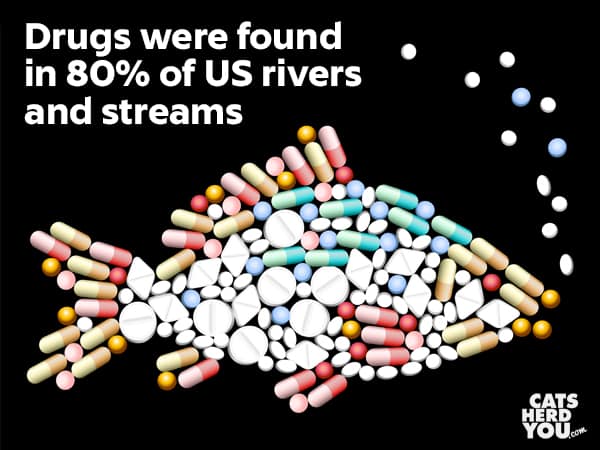How can you keep your cat safe this Halloween? Depending on how much trick-or-treating happens in your neighborhood and how much you love to decorate for the holiday, these tips can help:
Keep your indoor-outdoor cat inside, at least for the evening
If you have lots of scary strangers walking up the front walk in costumes over and over, it increases the likelihood of your outdoor cat being frightened and going missing or having an accident happen.
Make a quiet spot away from the front door’s constant ringing and opening
You may want to play some soothing music in the room to help cover the doorbell noises for the anxious cat. Some cats are calmer when they have a place to hide, so try providing a box or other hiding spot. If your cat is really anxious about the doorbell and door, consider sitting on your porch to hand out candy so that the bell isn’t causing such agitation.
Make sure your cat has ID
Since your kitty won’t carry an ID card, both a collar and microchip are suggested to make sure that if trick-or-treaters or Halloween revelers spook your cat and she ends up lost, someone can help her get home safely.
Be careful with Halloween decor
It’s not manufactured to be a safe cat toy and may have unhealthy components or pieces that are easily torn off by a playful cat, such as gauzy fake spiderwebs, which can cause blockages if ingested. Don’t forget that a candle inside a jack-o-lantern is still an open flame and can be dangerous if knocked down. Consider using a battery-powered, artificial candle instead.
Watch out for Halloween toys that weren’t meant for cats and might be a hazard
Glow sticks, enjoyed by children instead of flashlights while trick-or-treating, can be toxic.
If you’re going to dress kitty up in a costume, even just for photos, do it safely
If your cat isn’t used to wearing clothes, watch for signs of distress and don’t overdo it if your kitty gets upset. Be sure that the costume isn’t too tight for your cat to draw a deep breath and doesn’t obscure your cat’s vision.
Don’t share Halloween candy with your cat
If you have a cat like Ashton who will eat almost anything, whether it’s species-appropriate or not, make sure that candy is stored out of reach or in a sealed container.

























